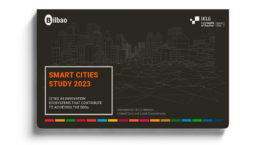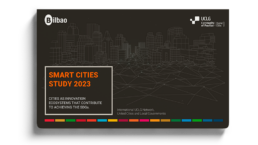
The study aims to identify the main trends in cities as innovation-driven ecosystems, spaces for collaboration, creativity and innovation in which pilot projects are generated in response to social and economic challenges. These projects drive R&D&I from a public-private perspective and contribute to the achievement of the United Nations 2030 Agenda.
The study involved 20 cities from 16 countries in Europe, Latin America, North America, Africa and Asia.
Smart cities, as well as their definition, are evolving every day through the introduction of emerging and frontier technologies, including data science and artificial intelligence. Technology can now understand and adapt to the behaviours of those who inhabit urban spaces. This maximises efficiency and aggregates real-time city information through the everyday experiences of citizens to improve the quality of life in cities.

This study focuses on the growth axes of smart cities:
• Smart Economy
• New Mobility
• Environment
• Digital Citizenship
• Quality of Life
• Smart Governance
The Study presents the main trends identified worldwide in each of the Smart Cities axes, as well as examples of good practices of reference cities, which can be transferable to other cities with similar needs and characteristics.
It also analyses the relationship between the six Smart Cities axes addressed in the Study and the Sustainable Development Goals to which they contribute through the innovative projects (good practices) that cities are carrying out at local level. It also shows which is the SDG highlighted by each of the axes.
The cities participating in Smart Cities 2023 have identified a series of elements, some specific and the vast majority common, that are either a barrier or, on the contrary, a driver or enabler; in relation to the development of innovation projects around the smart cities axes; to promote their future growth.
These cities have developed projects, initiatives and/or good practices in line with current trends in each of the axes of the Study. However, the main axes in which projects, initiatives and/or good practices are being carried out are Smart Economy (27%) and Environment (20%). This is due to the nature of the axes, as they address cross-cutting and multi-sectoral issues, which, compared to more specific axes such as New Mobility or Digital Citizenship, receive more attention in most Local Governments.
It is also worth noting that the Quality of Life axis is the least addressed by the participants. This is surprising from the point of view that, improving the quality of life of cities is the main objective of a smart city or a smart territory. However, seen from the other side of the coin, all the innovative projects developed around the other Smart City axes have a positive impact on improving the quality of life in cities, thus indirectly supporting the development of the Quality of Life axis.




